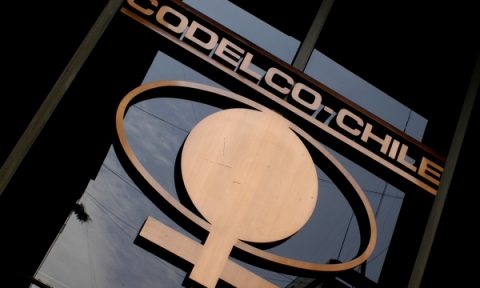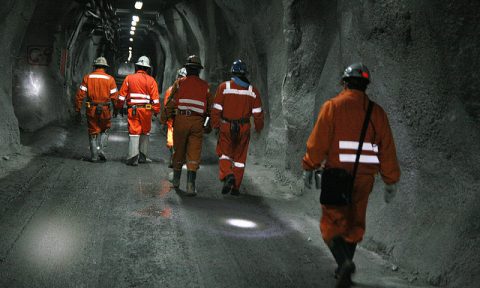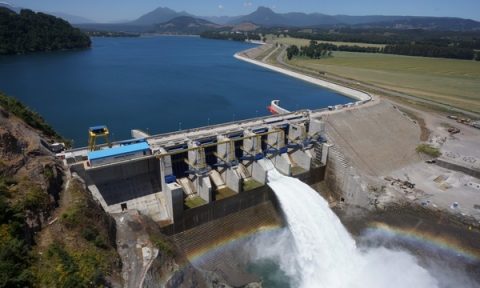Mining companies analyzes association formulas with power generator companies to reduce costs
AMSA’s formula, entered as a partner to a project, like in the industry because they can recover part of the rise in energy costs
The last blow was given by the Luksic group, after entering through Antofagasta Minerals to Alto Maipo. However, according to industry sources, would be several mining companies who would be analyzing various forms of partnership with electric companies, as a way to reduce costs in this section.
Because of the narrow living the electricity sector, which has seen the delay, or straight the disappearance of many large generation projects that represent almost 85% of the additional capacity required for the next eight to ten years, mining has had to return to its origins when each project had its own power plant.
Two models
Today, firms have shown two models with which they intend to attack the problem. The first one established by BHP and Codelco, developing generation projects to be built and operated by a third party, with its central Kelar and Luz Minera respectively. The other scheme is the one that has instituted by Luksic, entering property developments.
In industry highlights the model Luksic, who was born when seeking contracts for Esperanza and decided to enter Hornitos, GDF Suez. As for the plan of BHP and Codelco, ensure that this already failed in the first instance, when prompted Mining Energy from Codelco-and the first version of Kelar-when he was a coal project, because they put a straitjacket for operators, forcing them to sell their power to mining companies, yet there may be better opportunities outside. In any case, ensure that LNG could make this time the scenario be different.
According to market sources, the model which established Luksic allows mining companies to “recover” in something what they lose by the high energy prices. Thus, although they are willing to pay more for the generation, also receive profits from the sale of energy, and although not enough to “netting” the effect, does manage to mitigate the costs, said Francisco Aguirre, from Electroconsultores. The generator, in turn, receives a partner with his back to support the project, and signed power supply contracts with those who seek financing.
This scheme is the one that other mining companies would be working on. Within the coming months, they say, there will be new announcements, including NCRE sector.
In fact, since last year it sounds like a possible joint venture between Luksic and E-CL to lift Central Energy Infrastructure (375 MW each unit), a project that is still in search of a partner.
Exchange Factor
The reason that has prompted mining companies to go into the generation stage has been the adjusted scenario expected for the coming years. The figures are revealing. According to an analysis of the Mining Council, nations where minerals are extracted, Chile would be the second with higher electricity rates for the copper industry, taking into account projections between 2014 and 2020. It would only be surpassed by the Congo and would show prices 83% higher than in Peru.
Also, they say in the industry, the mining projects would not support prices above U.S. $ 150 / MWh in time.
And the estimates are worrying, considering that by 2020 the country will need more than 8000 MW of additional installed capacity, of which 3000 MW will be for mining. Stated another way, the Mining Council says that if in 2012, a total of 65 000 GWh generated in Chile, 33% was used by the mining industry And, by 2020, when the generation reach 100 000 GWh, 40% will be occupied by mining. In that scenario, the country will increase its power demand at rates 6% annually, with mining increasing its consumption by 6.7% per year
Why mining will increase its demand for electricity? A leading role in this regard as the water resource play, that while candy is bounded sources, finds its solution in the ocean. In 2022, the Ministry of Mining has made a register that will be invested about U.S. $ 10 billion by the mining companies to get water from the sea.
A higher water will require more power and intensity. According to industry estimates, to bring this water to projects in height, it will take between 30 MW and 40 MW depending on the flow and altitude.
Marginal Cost
Another crucial factor in the decision to enter the electricity business is that mining companies have faced to a change in the industry. The generators are instituting contracts at marginal costs between free clients, or at least, leaving a couple of years with this indexer.
The blow with this scheme is very hard for mining, considering that the marginal cost exceeds $ 200 MWh -and in some cases almost U.S. $ 300 / MWh- and now the contracts would be signed to thermal generation costs, ie around U.S. $ 90/MWh, to which must be added cost for power (additional U.S. $ 15 – U.S. $ 20/MW), transmission and sub transmission (U.S. $ 10 – U.S. $ 12 / MW), leaving the average cost of around U.S. $ 120 / MWh.
Given this, Diego Hernandez, AMSA’s CEO said a few weeks ago that “today we don’t have very clearly if we are able to have the energy for Chile to grow” adding that “when you have a PPA is completed, will negotiate to renew and Utility responds to renew it, but be first four years exposed to the marginal price (…)That is, the risks inherent in the business of generation, are being transferred to the customer. “
Among those who are paying marginal there is Codelco that after buying in the spot during part of 2012, since March has a contract with Colbún, which will be charged at marginal cost until 2015.
The Pelambres, from Antofagasta Minerals, is in a similar situation, which is corrected by the agreement with AES Gener from 2015. Industry sources claim that MCS and Sierra Gorda should do the same with AES Gener, while CAP and Kinross signed such agreements with Guacolda besides Lumina Copper with Endesa, among others.
In the mining sector is said that about 3,000 GWh per year are under this type of contract. This volume will continue to increase and it is estimated that all mining operations that would come between 2018 and 2019 must adhere to this system at least for a few years, giving rise to these new partnerships as the only way to reduce costs.
Source: Diario Financiero












